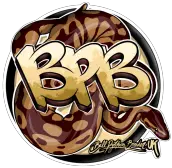The Firefly Ball Python is a super-bright morph. It’s been around since around 2005, but it is most definitely a classic. Let’s find out why…
What is a Firefly Ball Python?
The Firefly Ball Python is a combination of two incomplete dominant genes, Pastel and Fire. Both are visually expressed, and this is known as co-dominance. As their names imply, these two genes promote light colouration and crisp colour. This makes the morph incredibly bright and highly sought-after for breeding projects.
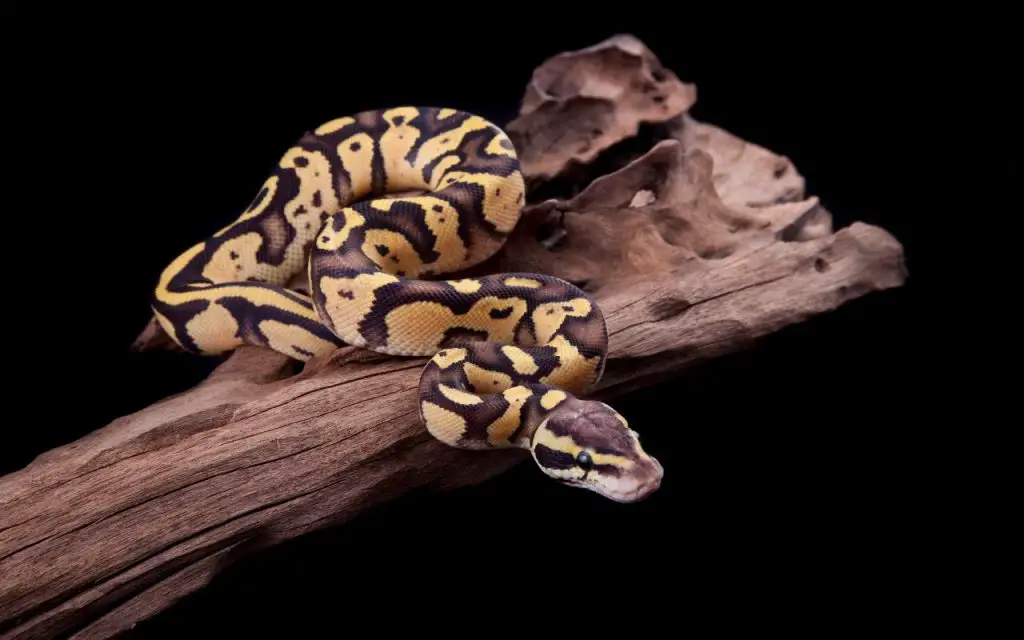
Description
As you’d expect with a combo containing Pastel, Firefly Ball Pythons have very bright yellow blotches on an almost black background. Because both genes are so bright, there are also patches of light grey blushing in amongst the black areas.
In particularly good examples, the head is exceptionally light on top and almost grey in the middle. This is especially true in hatchlings and does tend to fade a tad with age.
Again, thanks to the Pastel gene, the patterning on top of the dorsum is more jumbled up and disrupted than in normal Ball Pythons. It has more spots, bands, and blotches, making it look busier.
On the flanks, the pattern changes slightly – this is where the Fire gene comes into play. In effect, nearing the belly, the yellow blotches become distorted and almost flame-like, hence the name.
As you’d expect, this morph does darken with age, but being as bright as it is, you can still expect an older Firefly to be a very attractive animal.
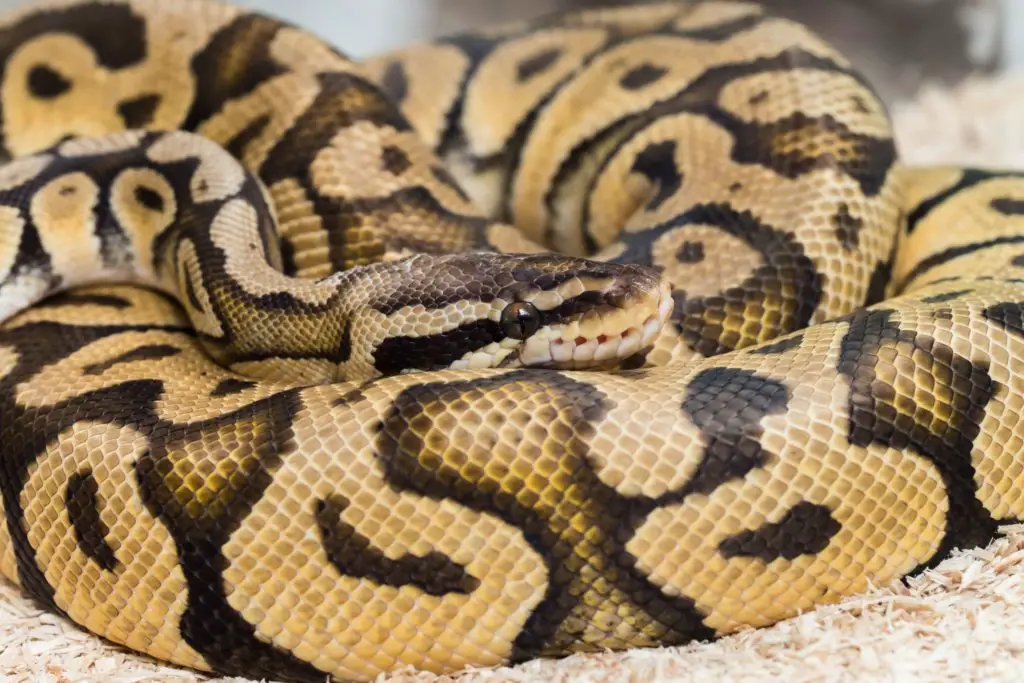
Firefly Ball Python genetics and possible issues
As far as we can tell, the Firefly Ball Python has no genetic issues whatsoever. This morph eats, sheds, and breeds healthily. They get to the same size as other Ball Pythons and tend to be just as docile.
Neither Pastel, nor Fire have been found to interact negatively with other genes and are safe to put into all known breeding projects.
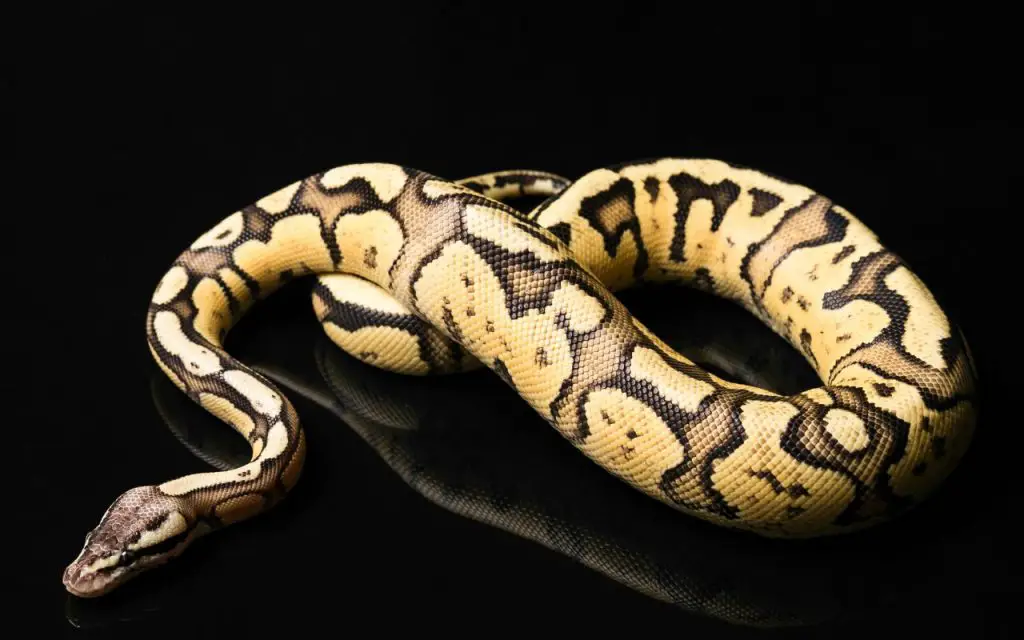
Breeding tips
It is extremely easy to make exceptional dominant or incomplete dominant gene combinations using Firefly. For example, if you breed it to a Pinstripe, you can make Dragonfly Ball Pythons. Or, if you want to make something even brighter, you can combine it with Vanilla and make Vanilla Scream Ball Pythons.
These are both beautiful morphs, and just two combinations out of dozens of bright genes to choose from. That said, you can go in other, more unusual directions with Firefly. Adding Enchi or Banana, for example, can make morphs that look altogether different.
The only real drawback with any of these incomplete dominant and dominant gene combinations is that they aren’t an especially good investment. What I mean by that is that they are astoundingly beautiful animals, but they aren’t particularly valuable. If you’re in it for the money, then the recessive genes are where it’s at!
As far as recessive genes go, the Firefly morph works best with Axanthic or Axanthic and Pied, though Firefly Clowns are also popular. In fact, all of these are both visually spectacular and hugely profitable projects.
Top 5 Firefly Ball Python Morphs (my choice)
1. Enchi Firefly Ball Python
When you look at Enchi, you could be forgiven for thinking it’s a relatively simple morph. Nonetheless, it generally does two very interesting things when mixed with other genes. First, it adds some banding to the pattern. Second, it intensifies colour, turning browns or yellows into deep yellows or oranges.
The Enchi Firefly Ball Python showcases these two things perfectly. It keeps the brightness of a classic Firefly but adds depth to the colour and calms down the pattern. Another bonus is that many Enchi Fireflies have a cool “Y” shaped pattern on the nape of their neck.
2. Banana Firefly Ball Python
I have to say – this is my least favourite on the list. It honestly looks quite similar to a dozen other Banana combos. So why did I put it at number 2?
Easy: the popularity of Banana, and the potential for breeding projects. After all, this website is in great part about breeding Ball Pythons. I can’t just tell you what I like, I actually have to give you solid advice too!
If you have a Banana Firefly Ball Python in your collection, you can make it useful in practically any recessive gene project imaginable. Everybody loves Banana, everybody loves Fire, and everyone loves Pastel. Add them all to a recessive combination and it’s a win-win.

3. Firefly Clown Ball Python
Another gene that everyone loves – and wants to invest in – is Clown. This recessive morph is one of the most popular of all, and most likely always will be.
Firefly Clowns combine the visually attractive aspects of these two morphs perfectly. They have the zigzagged dorsal pattern of a typical clown on a backdrop of bright yellow flanks.
Where things take a turn for the unexpected, however, is on their heads. On the top of the head you can the typical blushing of the Firefly, but with the addition of a series of black dots. All in all, these are spectacular looking animals.
4. Axanthic Firefly Ball Python
In case you aren’t familiar with it, Axanthism is a recessive trait that prevents an animal from producing yellow pigment. Axanthic Ball Pythons are therefore washed-out, dark brown and black animals.
Where the Axanthic trait gets interesting, though, is when combined with lightening genes such as Pastel and Fire. If you haven’t seen an Axanthic Firefly Ball Python – I suggest you look it up straight away! You’ll understand why they are so highly sought-after, and expensive.
5. Orange Dream Firefly Ball Python
Earlier I said that Firefly is a great morph for practically any project you can think of. Nonetheless, there is a gene you can add to it to make it even more exceptional: Orange Dream. This gene made an entry on my list of the most essential Ball Python Morphs for a reason.
It adds – you guessed it – a dreamy orange colour to everything. This makes it extremely popular, and (in my opinion at least) will one day make it as omnipresent as the Pastel trait.
Orange Dream Firefly Ball Pythons are every bit as cool looking, and popular, as you would imagine.
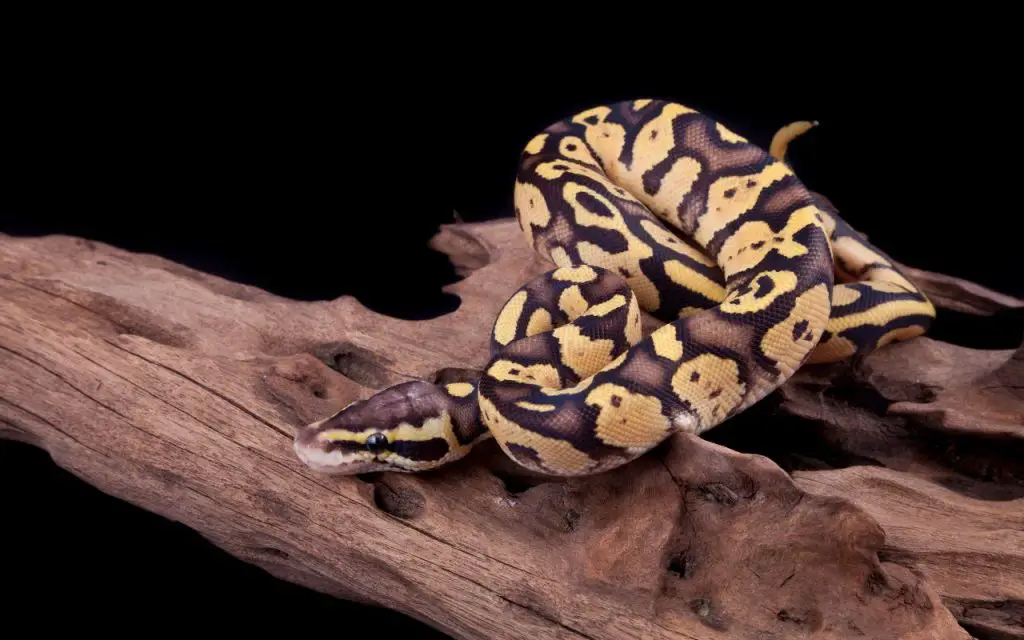
Firefly Ball Pythons for sale and cost
Despite being very cool to look at, this morph really isn’t very expensive. I regularly see them for sale for $125 to $150, and you shouldn’t be prepared to pay much more than this. What I will say is that there are similar genes to Fire, and some very bright Fire babies can look almost like a Firefly.
So, if you intend to buy a baby Firefly Ball Python for a breeding project, make sure it is from a respected breeder, or that it matches photos of other examples perfectly.
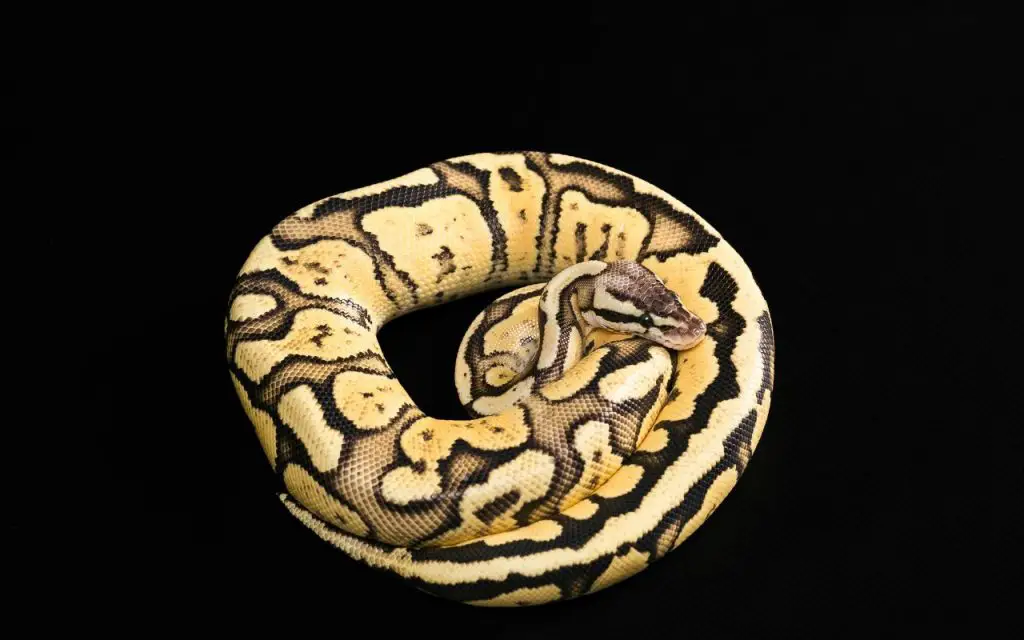
Firefly Ball Python Summary
| First produced by: | ?, 2005 or 2006 |
| Morph type: | two gene co-dominant |
| Genetic issues: | none |
| Influence on other genes: | Brightening, enhancing |
| Goes well with: | Pinstripe, Vanilla, Axanthic, Pied |
| Availability: | Reasonably priced and widely available |
FAQ relating to the Firefly Ball Python
What morphs make up the Firefly ball python?
A Firefly Ball Python is made up of two incomplete dominant morphs: Fire and Pastel. Incomplete dominant morphs are those which are passed on to 50% of offspring, and have a super form if inherited from both parents. Fire brightens colors and distorts pattern, especially on the flanks, where it has a flame-like effect (hence the name). For its part, Pastel brightens colors and adds more yellow to the pattern.
How big do Firefly ball pythons get?
Firefly Ball Pythons get just as big as regular Ball Pythons. This means 3.5-4.5ft (106-137cm) long for females and 3-3.5ft (90-106cm) for males. Unlike some genes, Fire and Pastel don’t seem to effect anything asides from color: Firefly Ball Pythons don’t grow to a different size or behave differently.
What is a Superfly ball python?
A Superfly Ball Python is almost the same as a Firefly, but has two copies of the Pastel gene instead of one. So, instead of Pastel + Fire, a Superfly is Super Pastel + Fire. This extra copy of the Pastel gene makes the pattern busier and the colors even brighter. If anything, the Superfly is probably a slightly more impressive version of the combo.
